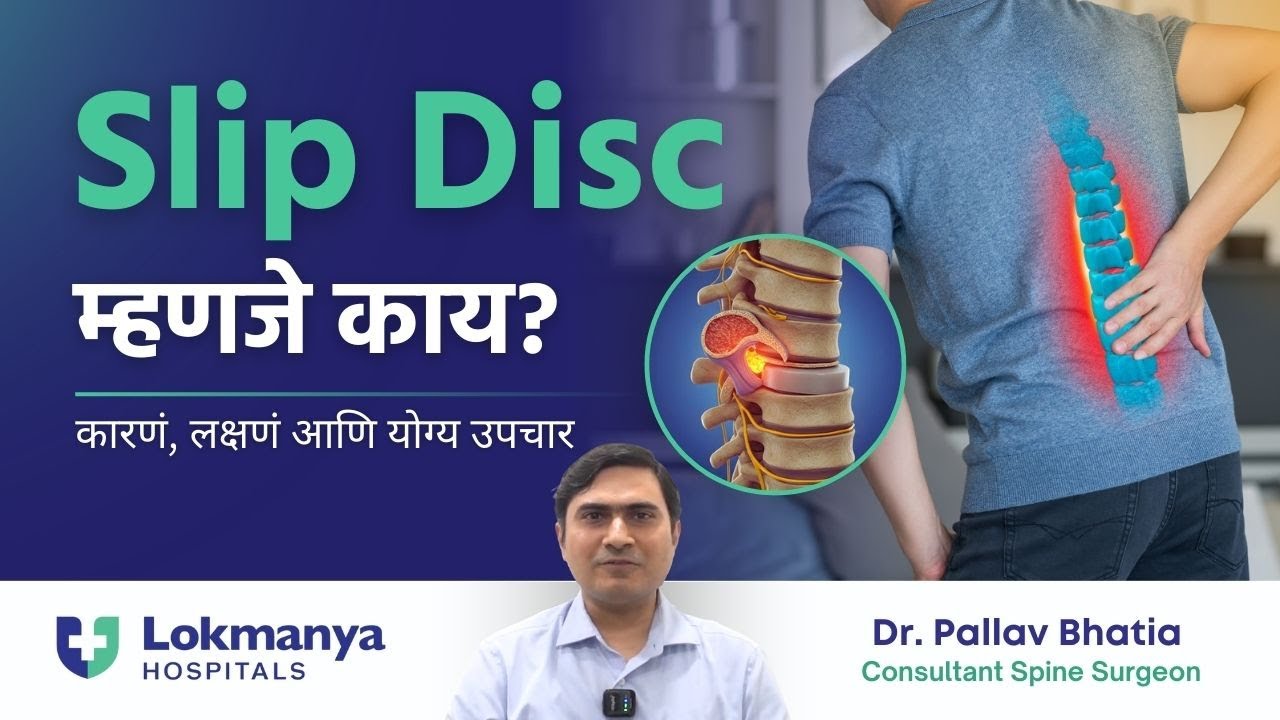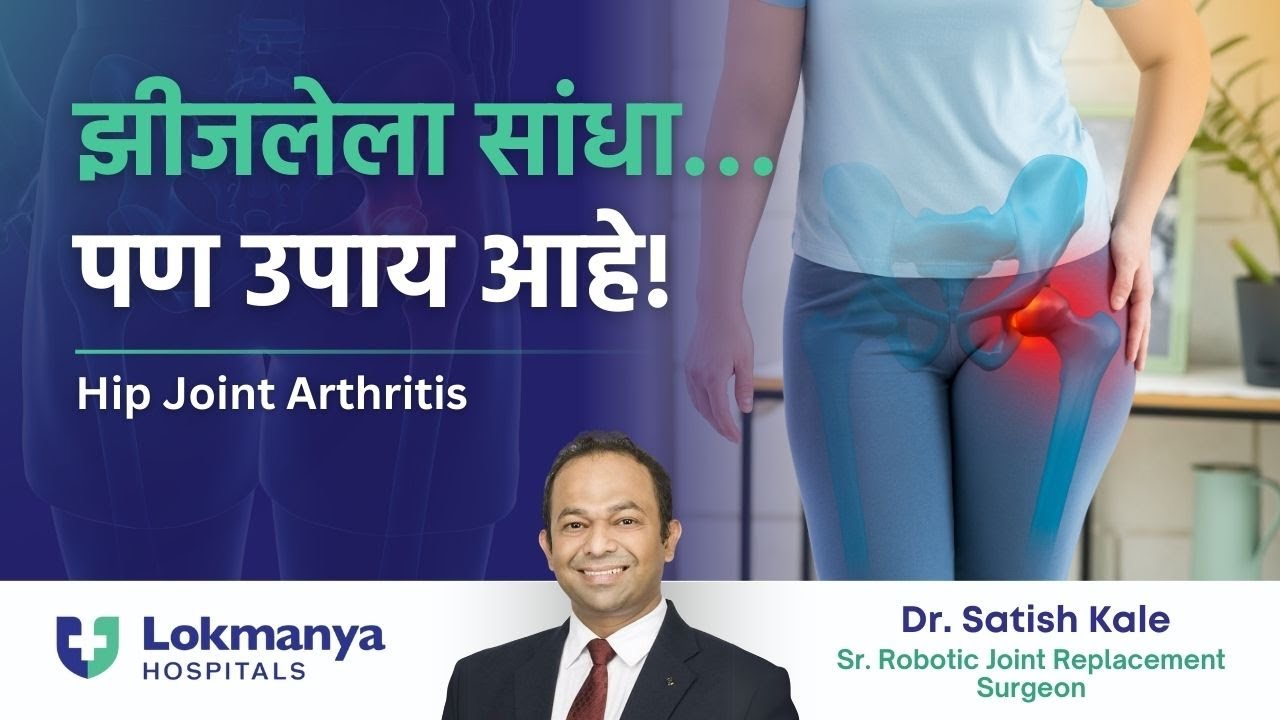What Is Slip Disc - Explained By Dr. Pallav Bhatia
Category: General SurgeryOrthopedics
Dr. Pallav Bhatia, Spine Surgeon at Lokmanya Hospital, explains that slip disc is one of the most common spinal issues. 80% of spine-related patients visiting the hospital are diagnosed with slip disc. To understand the condition, he uses a spine model to demonstrate what a disc is and how it functions.
The spine is made up of vertebrae, and between every two vertebrae lies a soft cushion-like structure called a disc. While the vertebrae are hard and stable, the disc is soft and flexible. Just behind this disc lies the spinal cord, from which nerve roots emerge at each level, supplying different parts of the body.
How Does Slip Disc Occur?
When a disc moves or bulges backward, it compresses the nerve root behind it, leading to pain or neurological symptoms. This condition is known as a slip disc. The causes of this condition can vary widely and often depend on the kind of work an individual does.
For instance, those involved in farming or physical labor frequently bend or lift heavy loads, putting pressure on the spinal discs. On the other hand, people working in IT jobs often sit continuously for long hours, which causes disc degeneration due to wear and tear.
Common Triggers of Slip Disc
Degeneration weakens the disc from within. Even a small strain, sudden bending, or improper movement can cause it to slip. For gym-goers, improper posture while lifting weights can lead to direct stress on the lower back, triggering disc slippage.
Dr. Bhatia mentions several cases where individuals experienced sudden back and leg pain after lifting weights improperly, and were later diagnosed with a slip disc. Similarly, homemakers performing household chores in poor posture are also at risk of developing this condition.
Treatment Options for Slip Disc
There is a common misconception that a slip disc cannot be treated or that surgery is the only option. Dr. Bhatia clarifies that this is not true. Most slip disc cases—around 80-90%—can be treated without surgery if diagnosed early and treated correctly.
The primary line of treatment includes physiotherapy and specific exercises under medical guidance. If followed properly, many patients recover completely without needing surgical intervention.
Non-Surgical Interventions
For patients who do not get relief through physiotherapy, Dr. Bhatia recommends a procedure called Transforaminal Root Block Injection. This is a targeted injection administered at the site of the slipped disc to relieve nerve compression.
Contrary to popular belief, this injection is not repeatedly required. Around 70-80% of patients who receive the injection and follow it up with proper exercise do not need further treatment. It is a technical procedure and should only be performed by a qualified spine specialist.
When is Surgery Required?
Surgery is recommended in only 1–2% of cases, typically when the patient experiences severe symptoms like loss of leg strength, foot drop, or numbness. In such cases, endoscopic spine surgery is performed.
Earlier, open surgeries were the norm, involving significant bone removal. Now, endoscopic spine surgery involves only two small incisions, making the procedure much safer with fewer complications like paralysis or infection.
Conclusion
Dr. Bhatia summarizes that slip disc is a common yet manageable condition. With timely diagnosis, proper physiotherapy, and advanced techniques like root block injections or endoscopic surgery, most patients can return to their normal routines without lifelong disability.
FAQs
1. What is a slip disc?
A slip disc occurs when the soft disc between spinal vertebrae bulges or moves backward, compressing the spinal nerve.
2. What causes a slip disc?
Common causes include heavy lifting, prolonged sitting, poor posture, disc degeneration, and sudden jerky movements.
3. Can slip disc be treated without surgery?
Yes, 80–90% of cases can be treated with physiotherapy, exercise, and medical guidance.
4. What is a Transforaminal Root Block Injection?
It is a targeted injection given at the site of the slipped disc to reduce pain and nerve compression.
5. Is the injection treatment repeated often?
No, most patients require it only once if followed up with proper exercise and care.
6. When is surgery needed for a slip disc?
Surgery is only needed in rare cases where there is loss of leg strength, foot drop, or numbness.
7. What is endoscopic spine surgery?
It is a minimally invasive surgery done through two small incisions, offering safer and quicker recovery compared to open surgery.

Dr. Pallav Bhatia
- M.B.B.S. and specialization in Orthopedics
Consultant Spine Department







